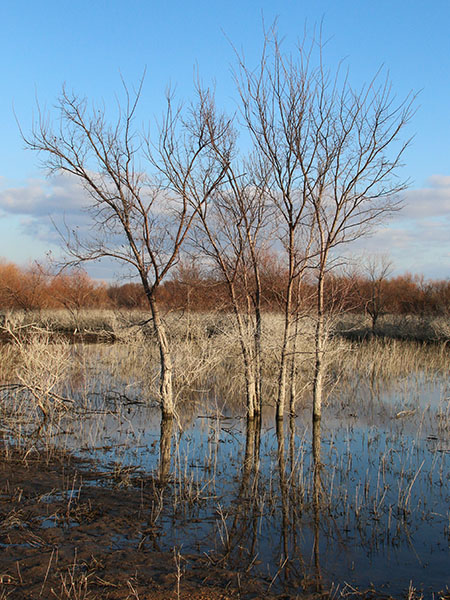
Our days are getting longer and the weather is turning warmer. Summer is right around the corner, and so is the sweltering North Texas heat that comes along with it. Soon the mild weather of this past winter and spring—one of the nicest extended seasons for being out-of-doors we’ve had in years—will be only a distant memory. But before we acquiesce completely to the scorching days ahead of us, let’s indulge in a little reminiscing. Let’s turn back the pages of the calendar just a few months and explore Wynnwood Park in the winter…
We visited Wynnwood Park for the first time in early February. Located in The Colony, the park sits at the tip of the peninsula that defines the southeast arm of Lewisville Lake. The park is boxed in by a pair of golf courses to the north—The Tribute at The Colony Golf Club and the Old American Golf Club. Shoreline Tribute Trail separates the two and follows a path out on to the peninsula winding through varied and interesting terrain. Two more trips later in the month covered different times of the day and helped us to complete our survey of this great little park.
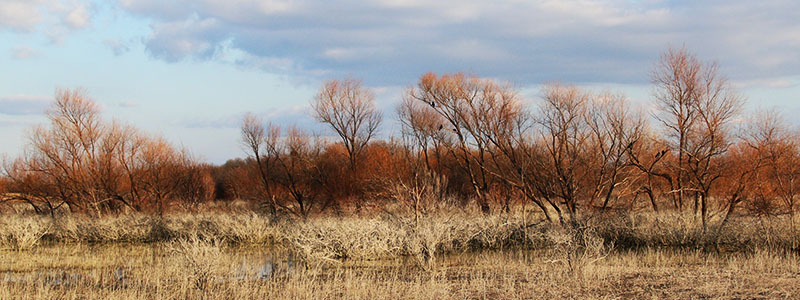
The Flood of 2015
You may remember last year’s heavy rains. They raised the lake levels to such a degree that a sizable portion of Wynnwood Park spent most of the summer under several feet of water. As the flood waters receded they carried away years of collected detritus from the forest floor. In its place was deposited a fine and even layer of silt across vast swaths of the park.

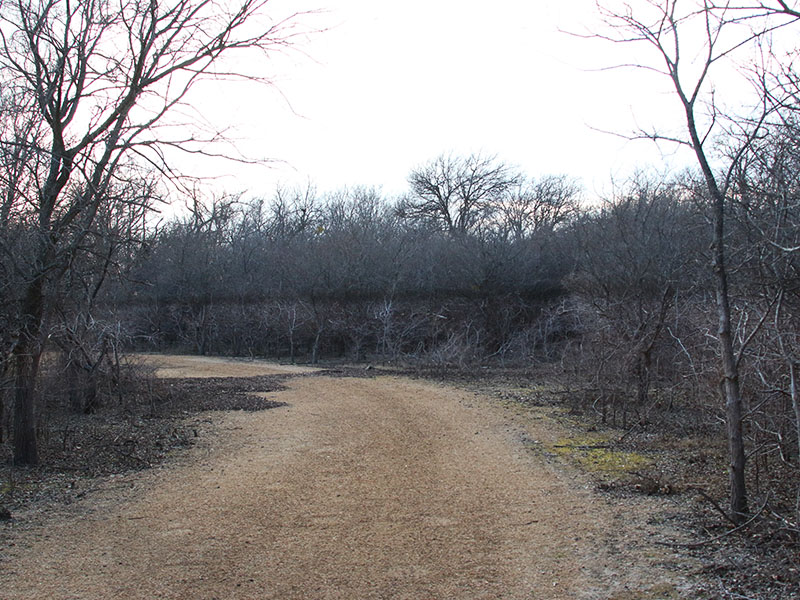
This blanket of soft wet soil created a near perfect stamp pad for recording animal tracks. The impressions left behind revealed much about the kinds of wildlife living in the park and chronicled many of their behaviors and habits. It was fascinating to behold.
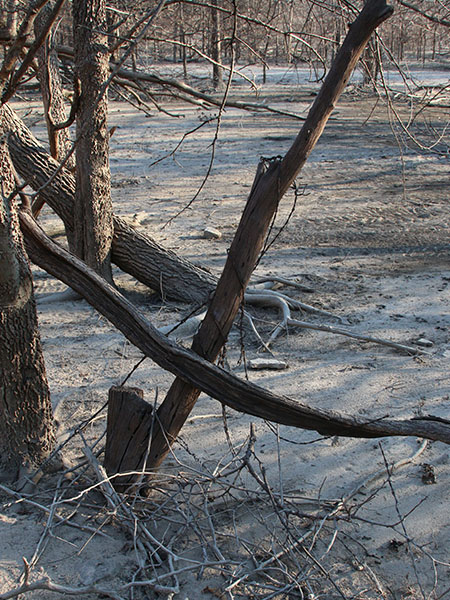
Every animal you can imagine was represented in this soft soil record. Coyotes, Bobcats, Raccoons, Opossums, cottontails, and Fox Squirrels tracks were abundant. So too, were the impressions left by large birds—Wild Turkeys, egrets, and herons.
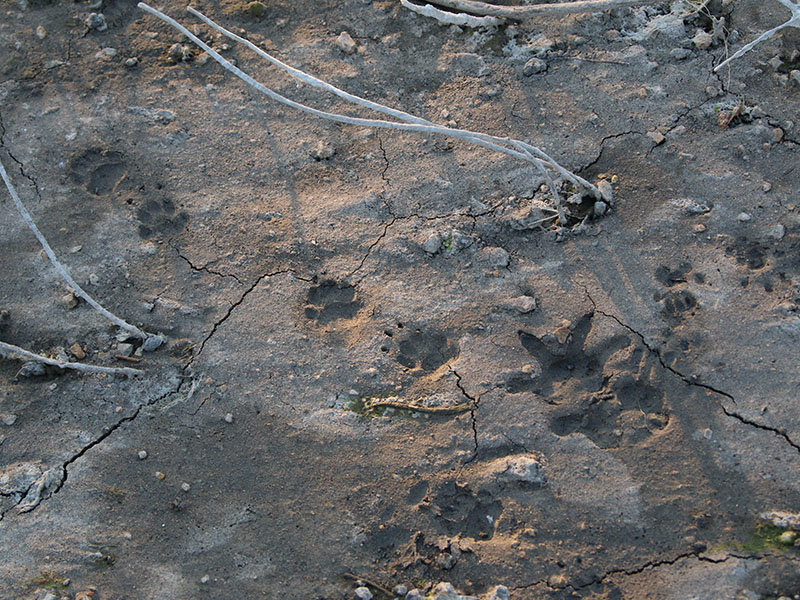
There are even signs of a small herd White-tailed Deer active in very localized areas around the park. I made a couple of efforts to get a look at these deer in person, but never did have success. My guess is that the deer make a special point of bedding down before the golf courses become active every morning. All of the human activity must keep the deer on a very regimented routine.
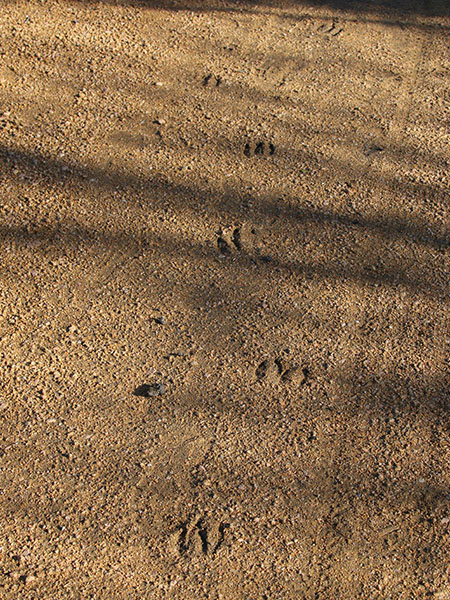
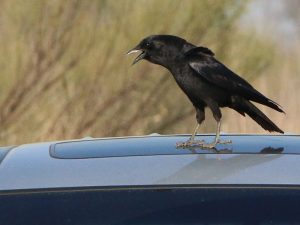
Access
The best way to access Wynnwood Park on foot is via the trailhead parking lot located off Lebanon Road. Shoreline Tribute Trail here is wide and covered in crushed granite. It is well maintained and in good condition except in places where the flooding was the very worst.
From the trailhead it is just a short half mile walk until you enter the park itself. Along the way you may have to share the trail with the occasional golf cart. This can disrupt wildlife photography endeavors, so beware. The good news is that once past the golf courses, you are likely to find that you have most of the park all to yourself. This, of course, is a situation very conducive to successful wildlife photography, so it all evens out in the end!
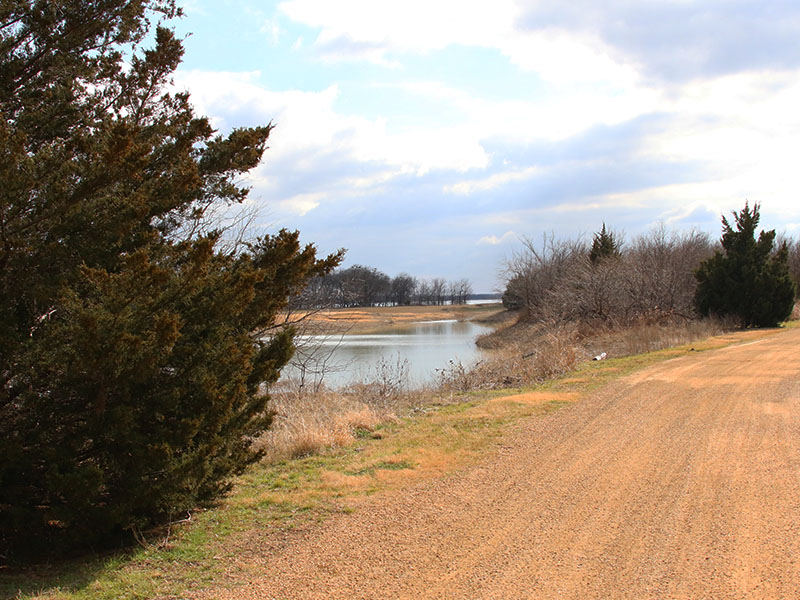
At roughly a mile in, the trail splits into a broad loop that will give you good coverage of the park if you follow it all the way around. Dense forest consisting mostly of Cedar Elm can be found to the north, and floodplain savannah follows the route to the south. A short spur near the western end of the trail takes you to the tip of the peninsula where you will be treated to nice view of the ongoing repairs to the Lewisville Lake dam and a mirror-image peninsula just across the way.
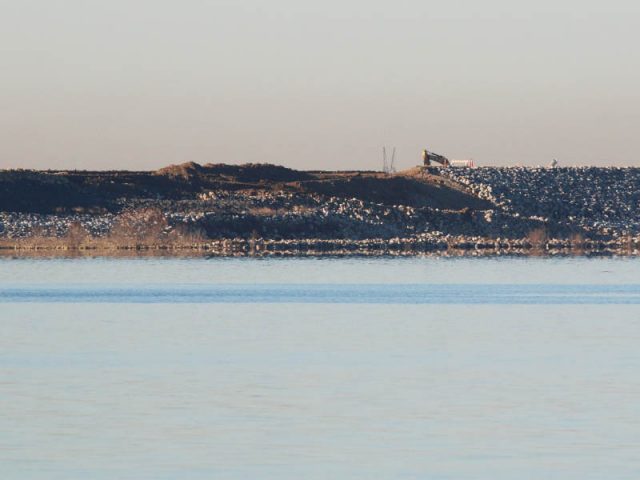
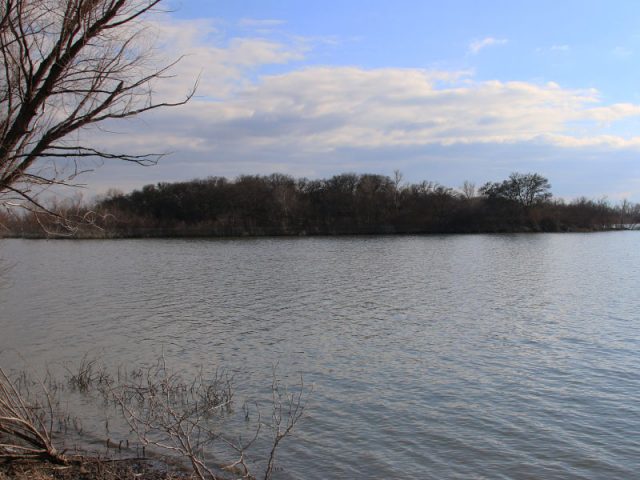
Those of you who know me, know that when hiking I like to start early and/or stay late. These times of day-night transition are simply the best for observing wildlife. They provide the best light for photography, and as an added benefit, they often treat you to stunning sun rises and sunsets. Its a win-win-win (except for the sleep it costs you)!
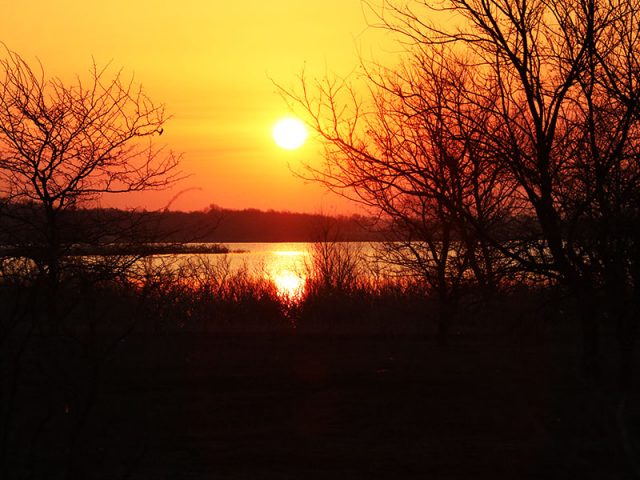
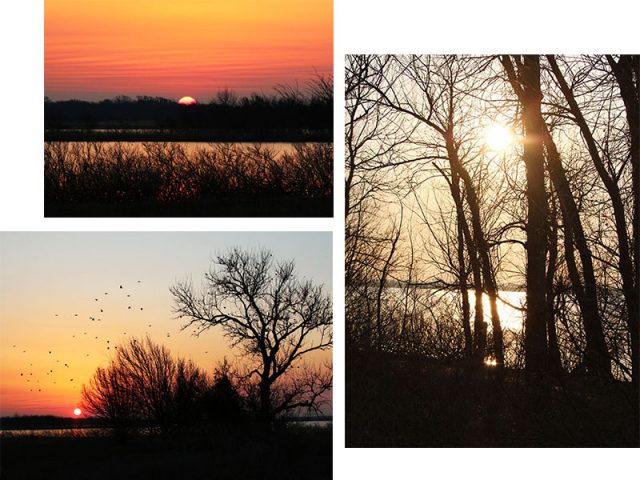

In Wynnwood Park, those with a sharp eye and a propensity to explore off trail just a bit, might just find some remnants of the property’s past use. Before the Lewisville Lake dam was completed in the mid-1950s, much of this park was still farmland. The ruins of bulldozed homesteads can still be found in a few places near the trail. Large slabs of concrete and bricks are the clues to look for. Storm cellars are still present at some sites. And with just a little scouting, you may even find some of the trappings of daily life—like broken dishes, hinges, etc laying about.
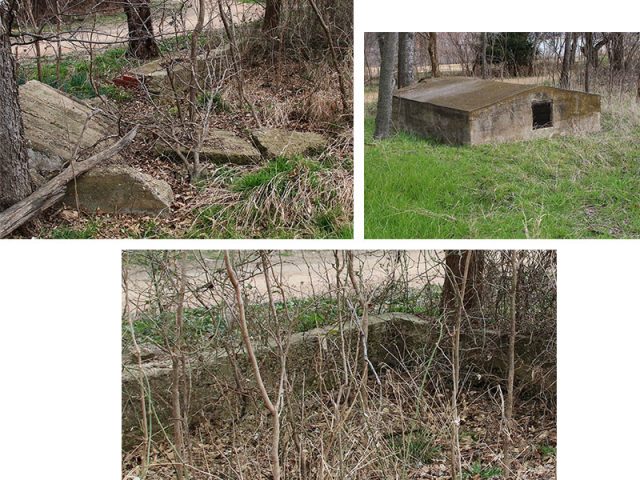
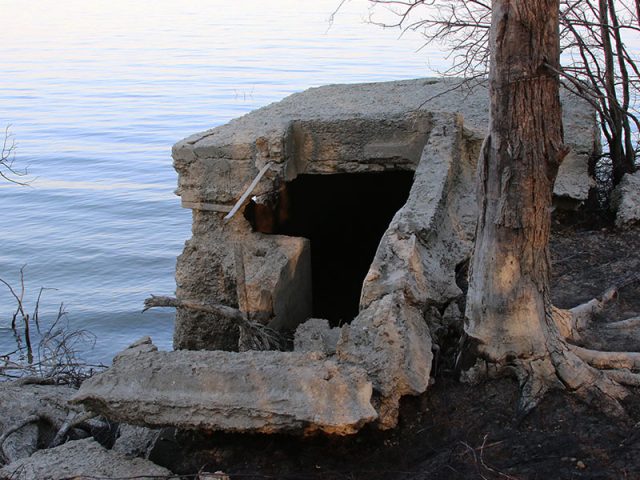
Beautiful examples of chaste wintertime landscapes can be found all along the route. Fog enshrouded ponds, somber meadows, and austere woodlands follow the path. Every turn in the trail comes with the promise of another stunning view.
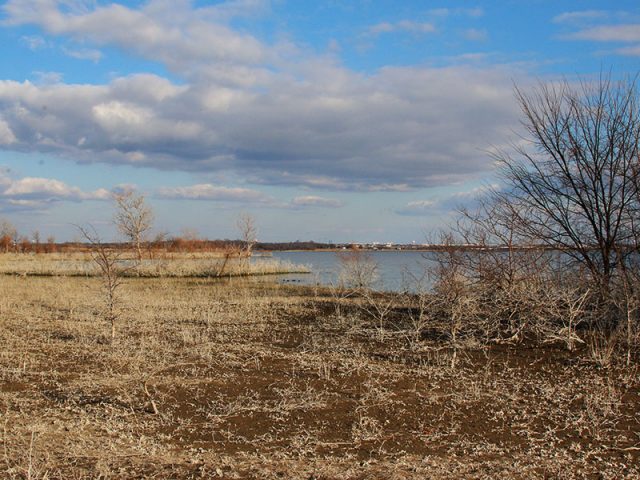
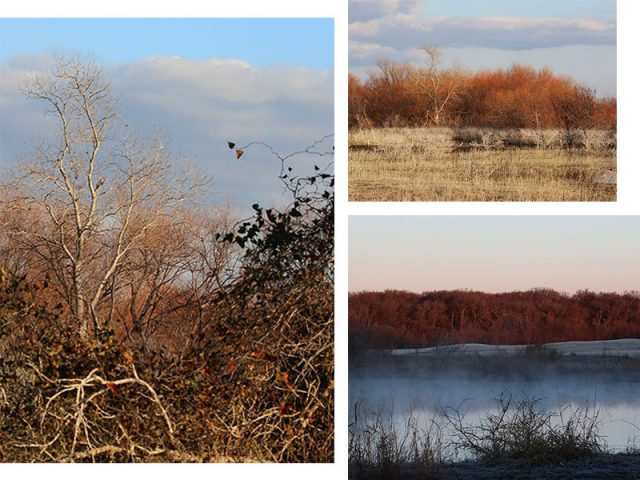
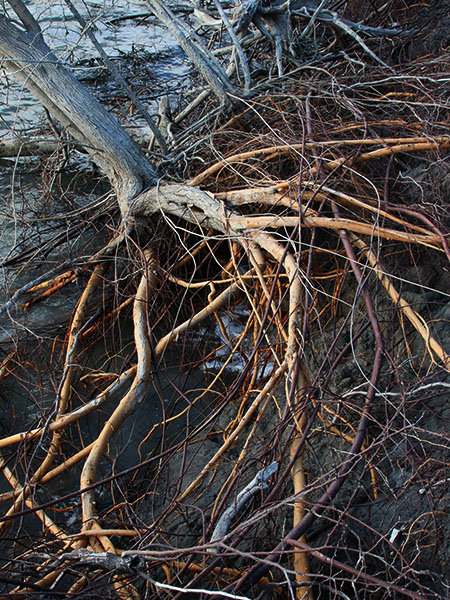
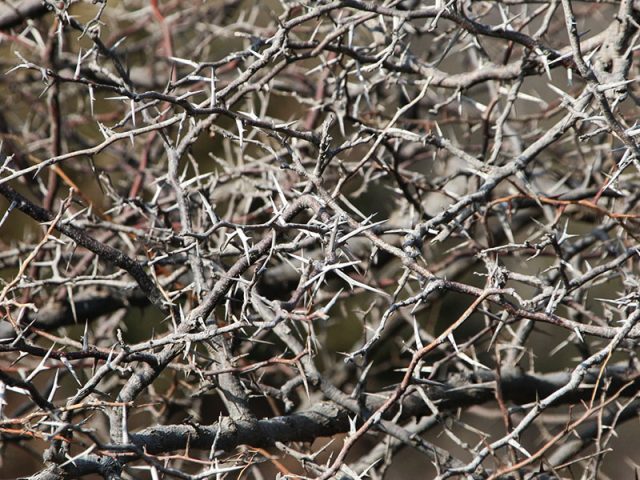
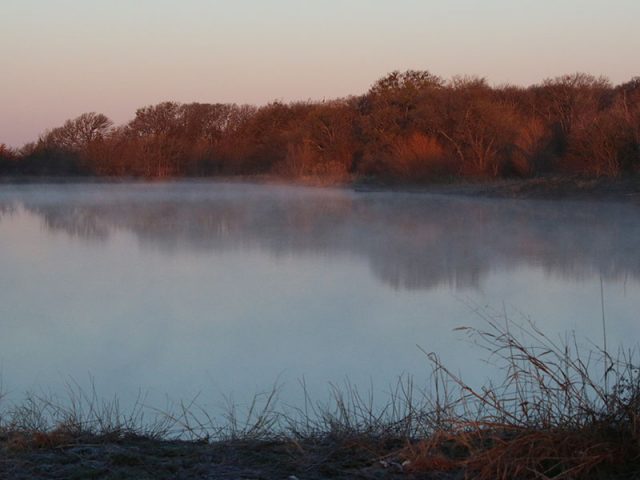

And then there is the wildlife, which is plentiful in this park. One of our first finds, discovered shortly after entering the park, was this unusual crayfish colony located in a recently dried depression. Surely, this low spot had been holding water just the day before. Now, all of the chimneys (burrow entrances) were capped, and there were no crayfish to be seen—except for a spattering of bleached white skeletons scattered all about. Each of these crayfish carcasses were about an inch in length. I am told that these represent the juvenile form. They also match the scale of the chimneys, so it is likely that many of the young crayfish will survive this dry spell, hunkered down as they are in the wet mud at the bottom of their burrows.
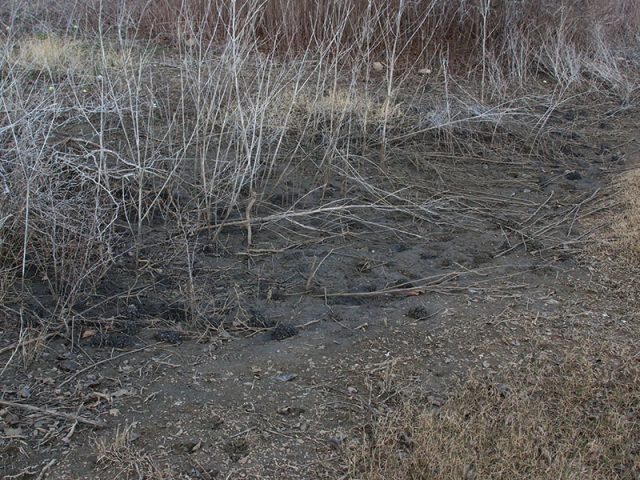
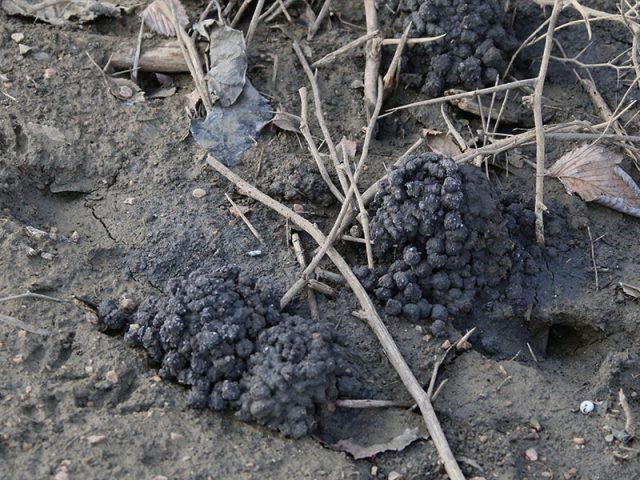
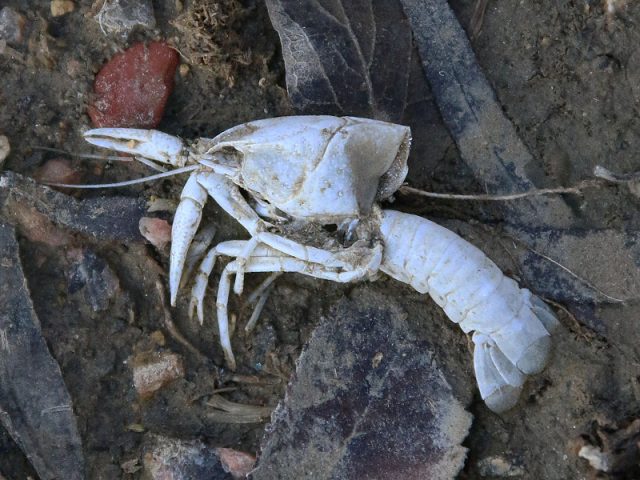
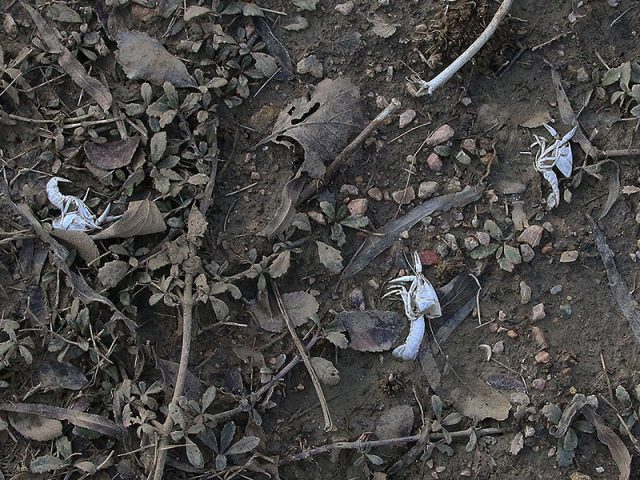
Next we spotted this female Bobcat strolling through the tall scrub grass. She was soon joined by her two nearly grown kittens, and the three of them moved on together following the bank of a small pond around to a more wooded area.
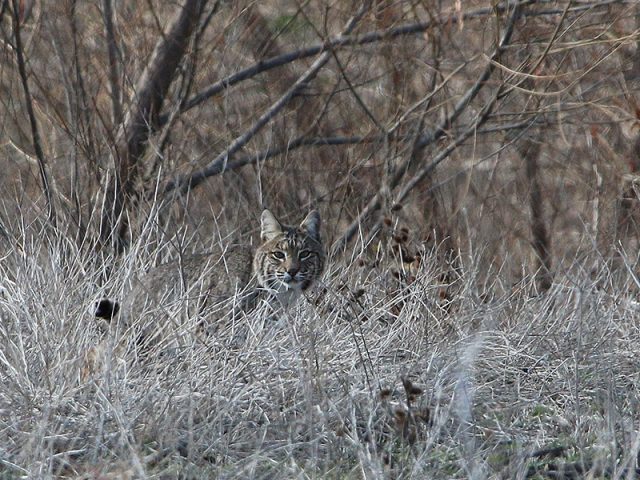
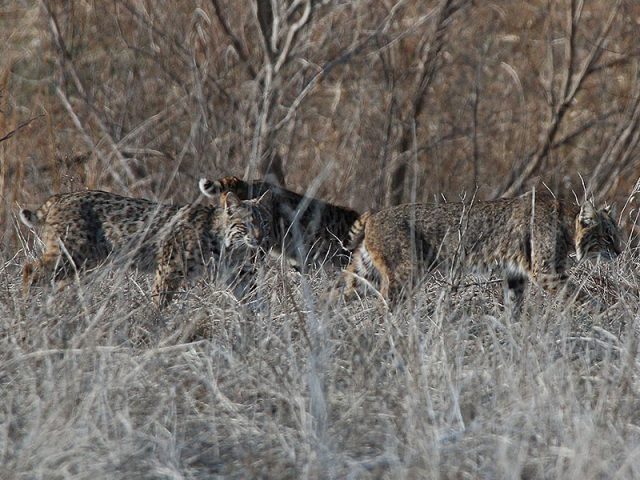
I have found Bobcats to be supremely confident when I have encountered them in the past. They typically seem more irritated at being observed than frightened by it. The wildcats always retreat as their first best option, but they seem to really resent having to do so.
In this case I did note a bit of apprehension coming from the mother Bobcat—which is understandable considering that she had two offspring under her care to be concerned about. Still, she kept her cool, and the group’s retreat was slow and steady. It was not until they were over 100 yards from us that they broke for the cover of the woods. What a great sighting!
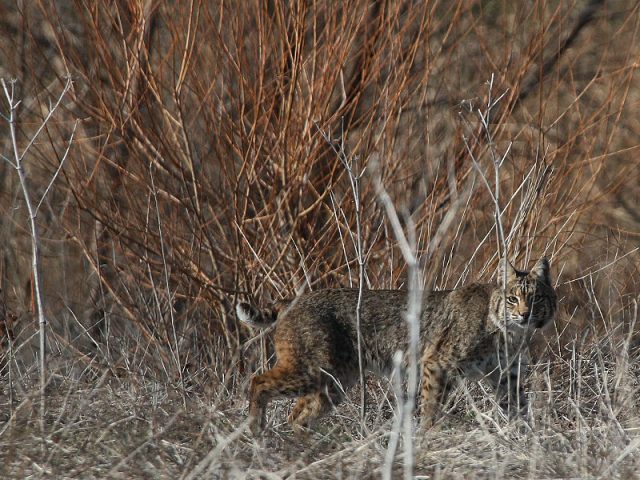
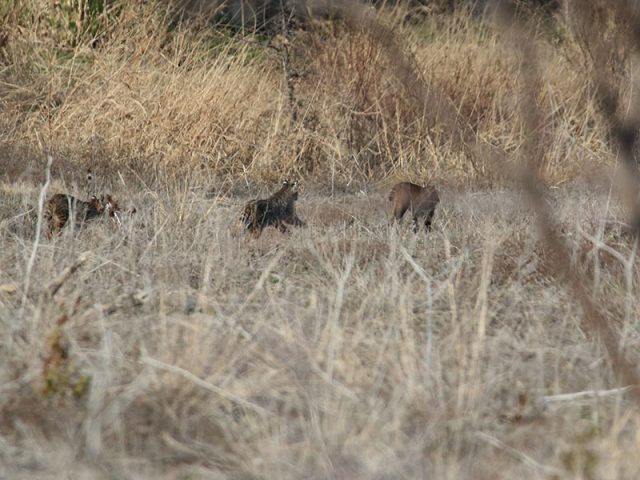
Songbirds are abundant along many sections of the trail. There were even reports of a rare Pyrrhuloxia in the park earlier in the Spring. I did not get to see him, but I did make some interesting observations of my own, included a slightly leucistic female Northern Cardinal.
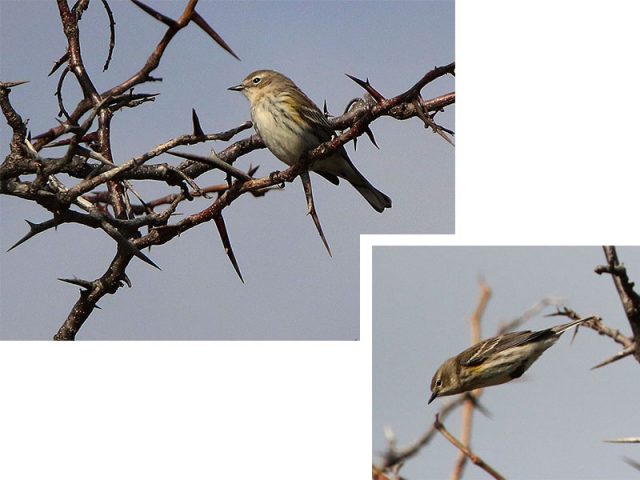
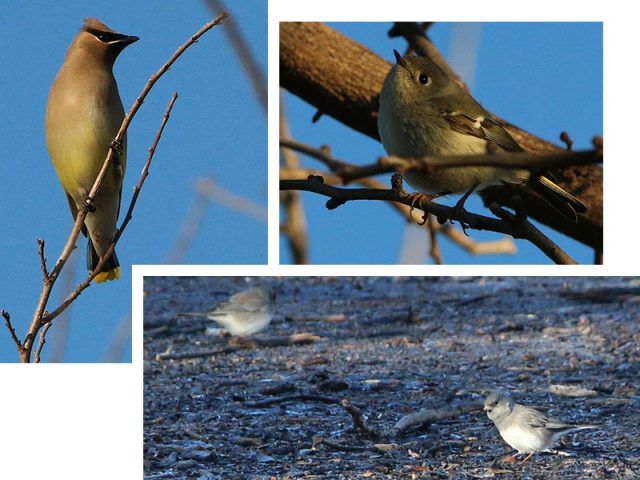
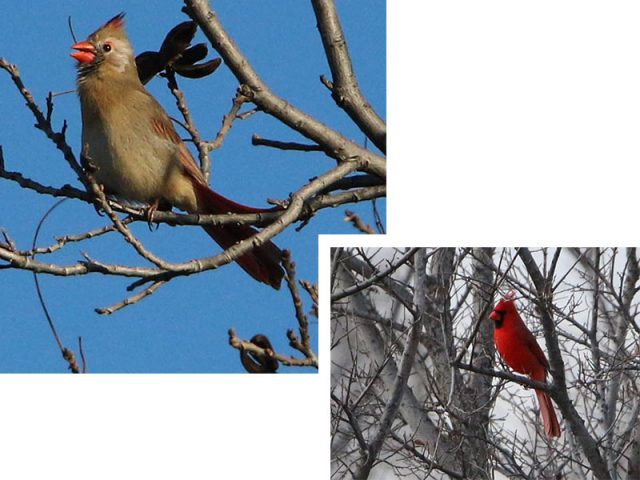
A nice variety of winter sparrows could also be found along many of these same sections of trail. Harris’s Sparrows, Lincoln’s Sparrows, Song Sparrows, and White-crowned Sparrows… It’s always a challenge to get photographs of these flighty and quick moving birds.
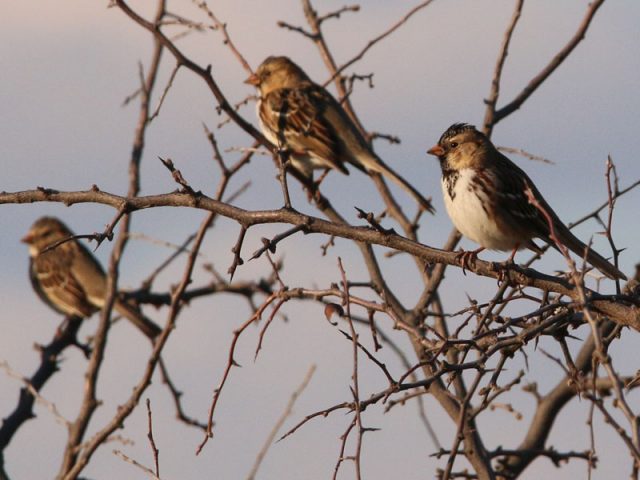


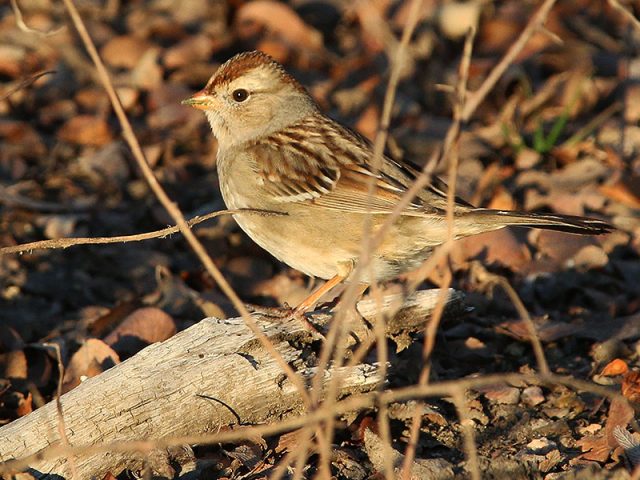
The numerous ponds and marshes found along the trail provide excellent habitat for many different kinds of waterfowl, wading birds, and shorebirds. Northern Shovelers and Mallards were common. The honking of Canada Geese was a constant refrain in certain parts of the park. Great Egrets and Great Blue Herons shared the shallow water near the banks with Greater Yellowlegs and the ubiquitous Killdeer.
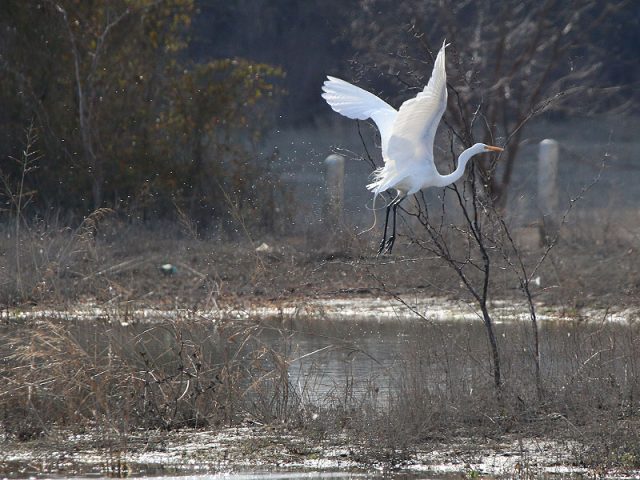
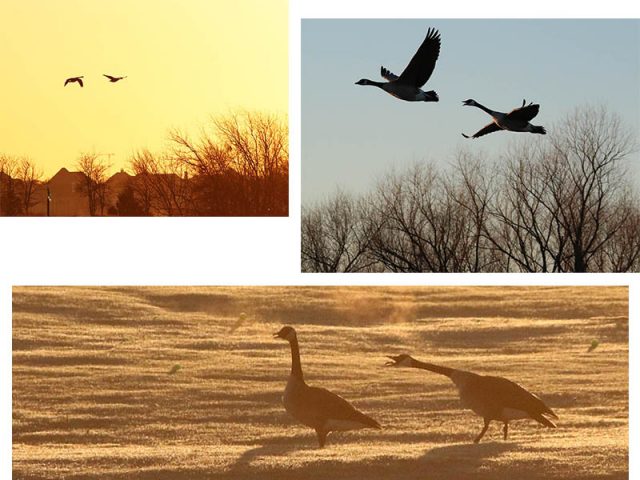

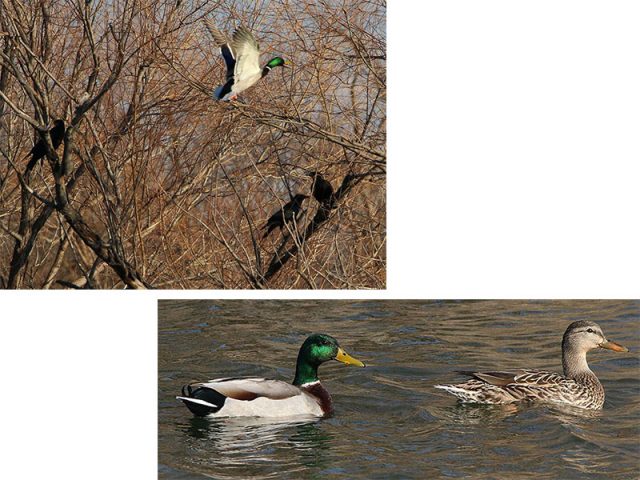
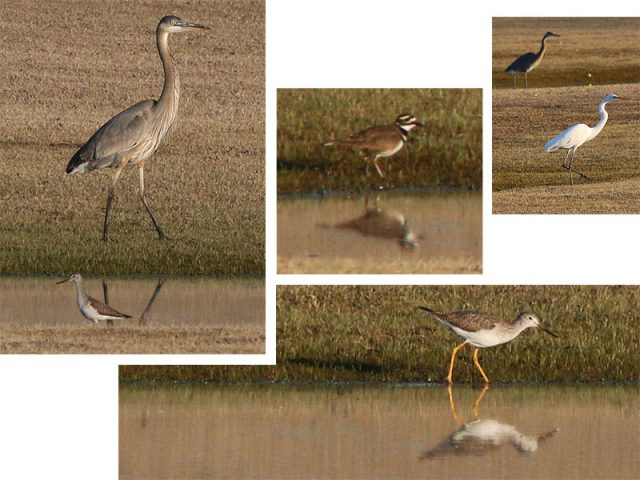

As we approached the lake other types of waterfowl presented themselves. Formations of huge American White Pelicans approached us from above. Flocks of Double-crested Cormorants did the same. All were headed to the safety of the lake water where they would busy themselves feeding on small fish for the remainder of the morning. Around the reedy areas near shore Red-winged Blackbirds marshaled in trees to begin their day.
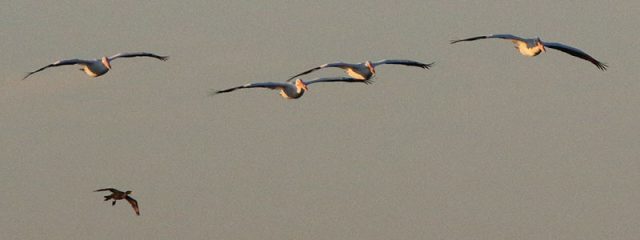
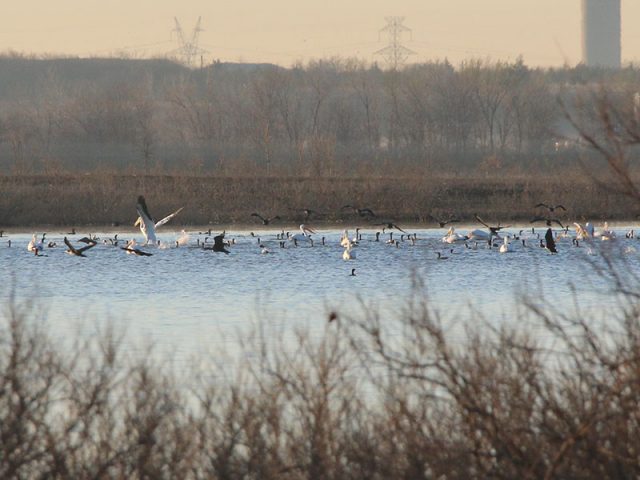
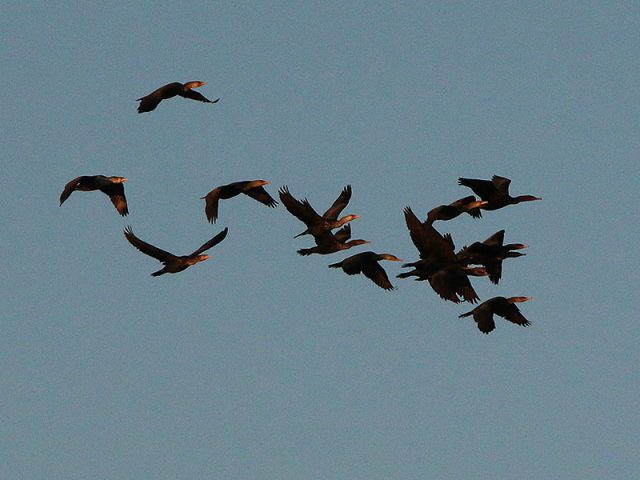
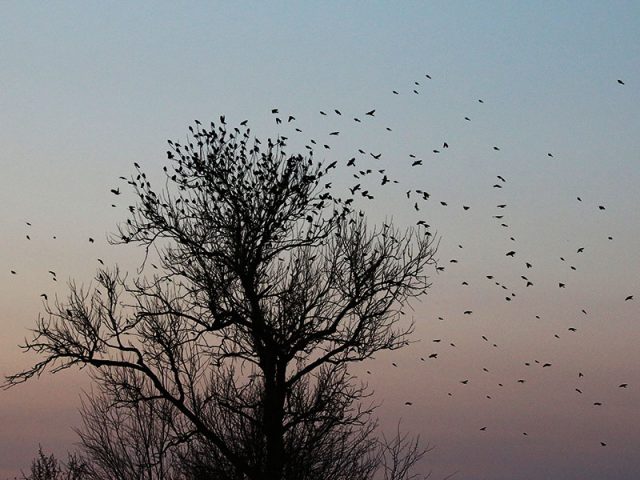
Along the north leg of the trail we began to notice feathers clinging to vegetation here and there. At first it was just one or two feathers every 25 yards or so. But as we continued down the path the number of feathers we encountered steadily increased. It was becoming clear that something had big had happened somewhere down the trail, and we wondered if we would have the opportunity to discover what it was.
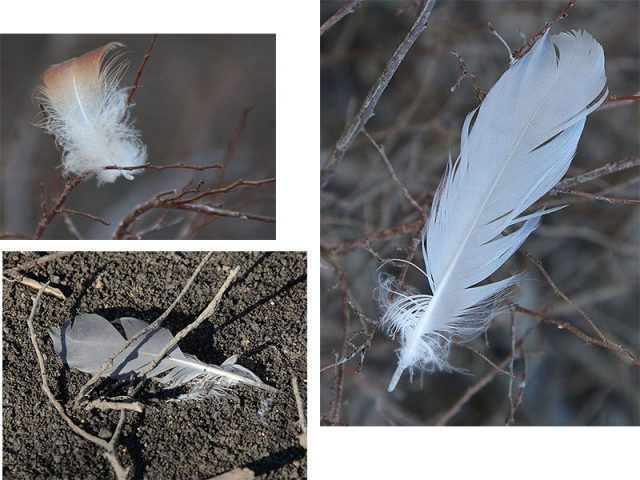
Sure enough, after almost a quarter mile of feather strewn trail, we finally found round zero. In this spot beside where a Ring-billed Gull had met its doom. Judging from the tracks surrounding what was left of the carcass, Coyotes had been involved somehow in this outcome. What is not clear is just how this turn of events transpired. There is plenty to wonder about. It would have been very interesting to see just how the Coyote managed to get the drop on the usually very alert Ring-billed Gull.
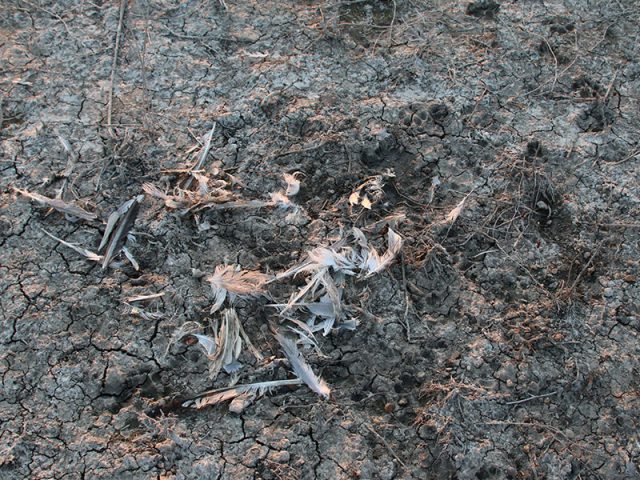
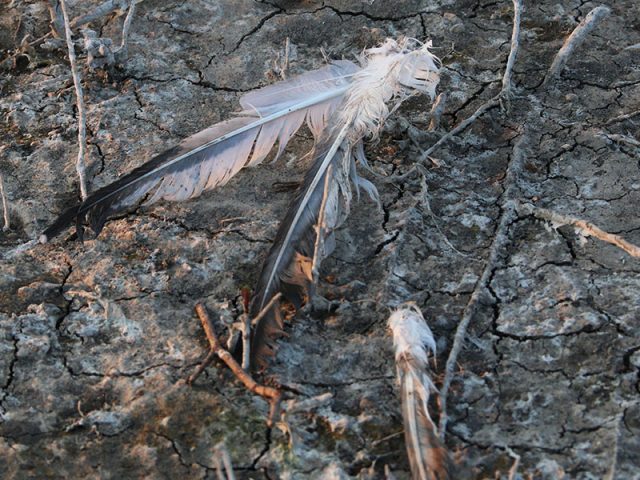
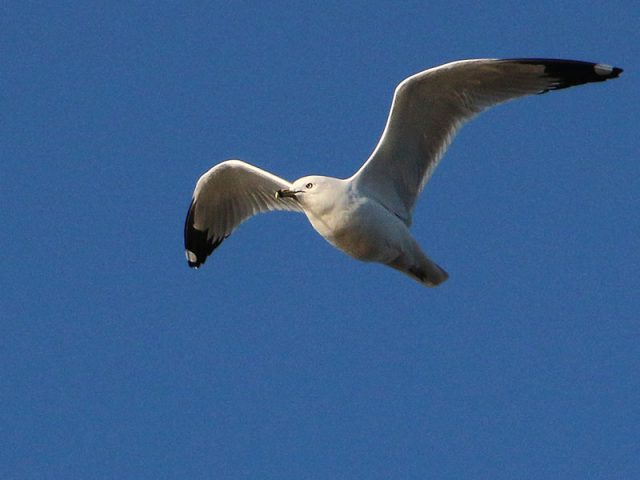
While covering the southern leg of the trail through the floodplain savannah we encountered a Cooper’s Hawk stalking one of its favorite prey animals—the Mourning Dove. These doves were plentiful in this part of the park, finding plenty to eat in the seed littered grasslands.
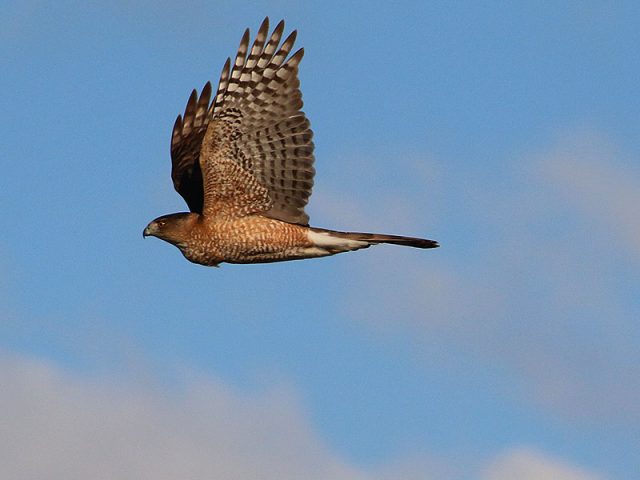
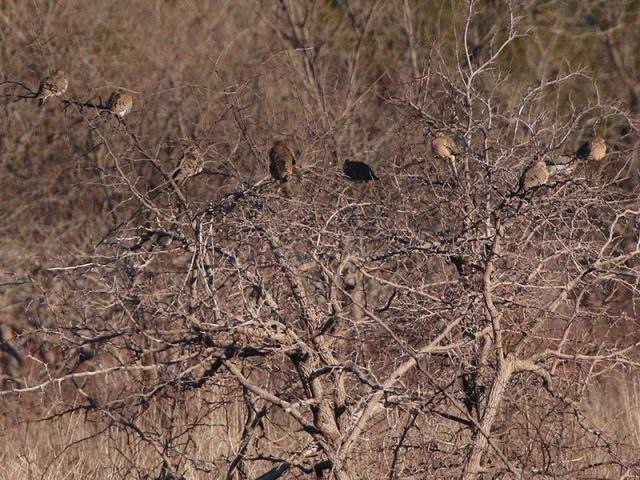
It was here that we came across an odd piece of driftwood. The branch was missing its bark, and the wood underneath was carved with an intricate pattern of half-inch long grooves. These patterns were certainly the work of some kind of larvae, though I am not sure just which one. A lone American Kestrel kept a careful watch on us from a nearby perch as we examined the strange stick.
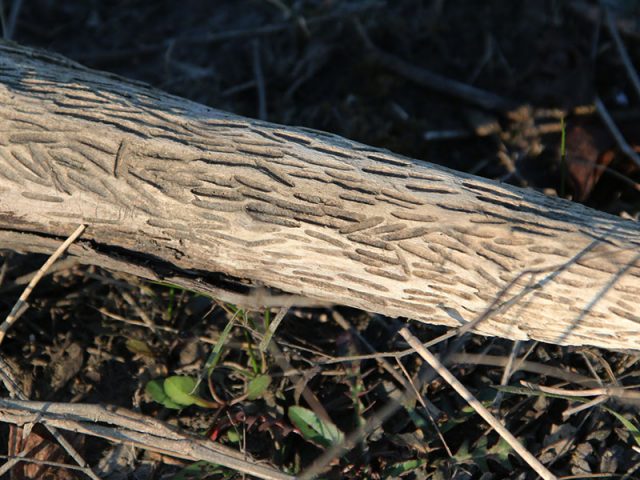
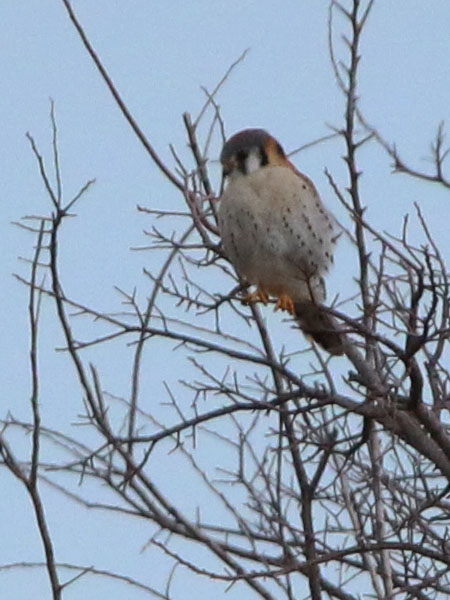
Leaving this wonderful park late one afternoon, we had one more notable wildlife encounter. It would prove to be a perfect bookend to our earlier Bobcat sighting. In nearly the exact same spot where we found the Bobcats a few days earlier, we now observed a pair of Coyotes working together as they hunted vermin in the tall grass. Likely a mated pair, these two Coyotes were preparing themselves for challenges of raising a litter of pups that would becoming with the warmer weather of spring—now only a few weeks away.
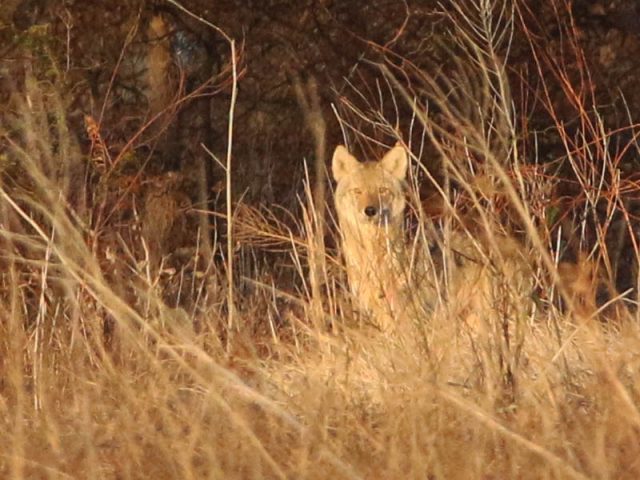
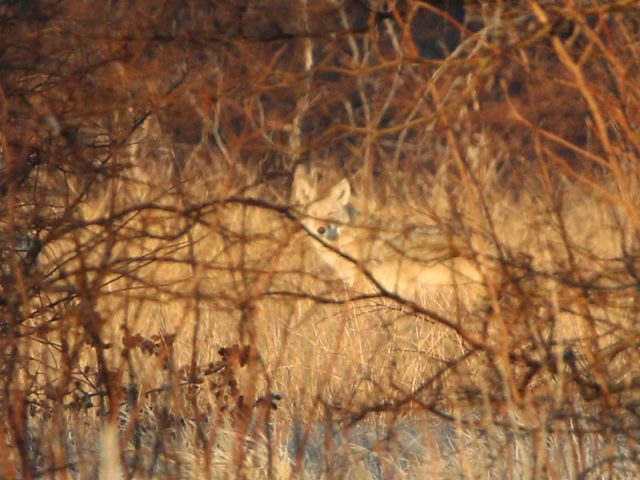


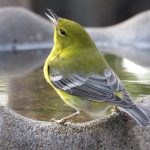

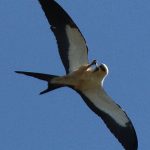
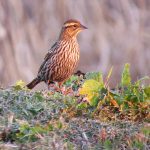
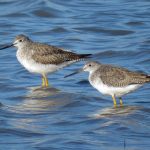
Chris, great report as always! Really nice bobcat encounter.
Dave McNeely
Hi. Where in the park is the storm cellar?
One is near the entrance, and the other is along the west shore.
Amazing report!
I will be moving to The Tribute in a couple of weeks and would love to go there.
Would you consider this park a good options for camping overnight?
Thanks!
I don’t believe camping is permitted in this park.